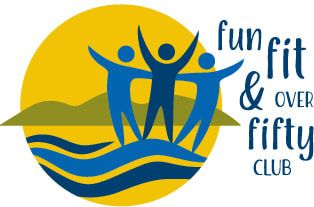Foot Sports Risk Descriptions
Risk levels are not to be confused with fitness difficulty levels, which relate to how strenuous the hike is (easy, moderate, strenuous).
Nothing in life is risk free, including walking and hiking. These risk levels are best-guess indicators. Surprises can happen and few trails are consistently the same risk over the complete distance.
The intent is to provide guidance to members when they consider if they want to go on a hike and to emphasize when hiking essentials are, in fact, essential. Establishing risk levels for hikes does not in any way reduce the acceptance of personal responsibility each participant assumes to participate in an event.
There are basically 3 levels: 1-2-3, with 1 being the lowest level of risk. (There is a fourth level which might have applied to a few of our adventures over the years but in general will not be used.)
Nothing in life is risk free, including walking and hiking. These risk levels are best-guess indicators. Surprises can happen and few trails are consistently the same risk over the complete distance.
The intent is to provide guidance to members when they consider if they want to go on a hike and to emphasize when hiking essentials are, in fact, essential. Establishing risk levels for hikes does not in any way reduce the acceptance of personal responsibility each participant assumes to participate in an event.
There are basically 3 levels: 1-2-3, with 1 being the lowest level of risk. (There is a fourth level which might have applied to a few of our adventures over the years but in general will not be used.)
Click for Risk Level 1
Trail tread is very good, namely paved or comfortable gravel or dirt with few tripping hazards, allowing for the fact that even paved trails occasionally have potholes or may have wind-blown branches, etc. Tread is wide enough to comfortably walk without worrying about stepping off trail. No or very minimal spatial exposure near trail. No snow, ice, or any significant slipping hazards. No really steep places where hiking poles, hand holds, or use of body parts other than feet would be recommended. The trail is within good cell-phone coverage or is close to town with town-like emergency response times. Hiking essentials are not required. Two-way radios and an emergency locator device are not required. Examples: most of our strolls, the river walk when free of ice, Badger Mt Langdon trail, Candy Mt trail, WE Johnson Park trails, etc.
click for Risk level 2
Trail has mostly good tread with only occasional tripping hazards easily seen. Trail may be narrow or may have some steepness on the sides. Applies to Level 1 trails when they have icy or slippery conditions. There is no significant spatial exposure that can’t be avoided. Countryside is open enough that, if someone strays off-trail, finding one’s way back to the trail or trailhead is easy (i.e., little chance of getting seriously lost). A Level 1-like hike may be considered Level 2 if the hike has no or spotty cellphone coverage and emergency response times would be much longer than in-town times. Hiking essentials, two-way radios, and an emergency locator device may or may not be required, depending on how long the hike is and how close to town. Hike description will specify if hiking essentials are required. Examples: Badger Mt Canyon, Sagebrush, or Skyline trails; east slope of Rattlesnake Mt; railroad bed trails with decent tread.
click for Risk Level 3
This level applies to most mountain or country hikes. Tread can have substantial tripping hazards, such as large, sharp, or loose rocks or exposed tree roots. Trail may be narrow or unimproved, such as on wildlife trails. There may be some dead-reckoning, such as in the coulee countryside. Trails may have steep upsloping or downsloping sides such that stepping off the trail may involve steepness and loose rocks or soil. Trails may occasionally be steep enough that handholds or sliding on body-parts other than feet may be helpful. These situations should be avoided if possible and, if necessary, of short duration. Use of hiking poles may be common and even highly recommended for steep trails with loose rocks. Fording of streams on rocks or logs may occur. Maneuvering around treefalls may occur occasionally. Wading through deep water or fast-moving water mid-calf or above is to be avoided. Trail may provide access to viewpoints with significant spatial exposure, although the trail itself should not require technical rock-climbing skills or ropes. Hiking essentials are required for these hikes, unless otherwise specified. Sunscreen or insect repellent might be optional depending on time of year. Two-way radios and an emergency locator device will almost always be required for these hikes.
Click for Risk Level 4
This level applies to activities involving more risk than normal hiking on mountain trails. It would apply to activities done only rarely by the club. Participants must be fully aware of the risks and readily willing to participate without being a burden on the group. Examples might include climbing a mountain involving rock scrambling with considerable exposure (e.g., Angel’s Landing, almost any mountain peak that’s not a walkup), technical climbing of any sort, steepness requiring a rope, hiking over snow and ice requiring ice axes or rope, spelunking in caves requiring any technical skills or not commonly open to visitors. Hiking essentials are required unless otherwise specified. Two-way radios and an emergency locator device will almost always be required for these hikes. Event leader may require other event-specific equipment
